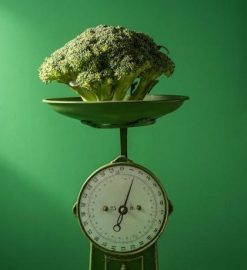high priest garments symbolism pdf
The high priest garments symbolism represents spiritual concepts, in biblical scriptures, with each piece holding deep meaning and significance in the English language always used online.
Overview of the Symbolism
The high priest garments symbolism is a complex and multifaceted topic, with various interpretations and meanings. According to online sources, the garments represent spiritual concepts and ideas, with each piece holding deep significance. The use of certain materials, colors, and designs also convey important messages and themes. In the context of biblical scriptures, the high priest garments are seen as a way to connect with the divine and to represent the community. The symbolism is not limited to the individual pieces, but also to the overall design and composition of the garments. By examining the high priest garments symbolism, one can gain a deeper understanding of the biblical narrative and the cultural context in which it was written. This overview provides a foundation for further exploration and analysis of the topic, using online resources and scholarly articles as a guide.
The Significance of the Headdress
The headdress symbolizes authority and divine connection,
found
in biblical scriptures, with each piece holding deep meaning always online in the English language context used.
Subjection and Subordination
The concept of subjection and subordination is deeply rooted in the biblical scriptures, where the high priest’s headdress is seen as a symbol of his subjection to a higher authority. According to 1 Cor 11:3-10, the covered head symbolizes subjection, and the headdress of the high priest intimated his subjection and subordination to a higher power. This subjection is not limited to the high priest alone, but is also a representation of the subjection of all believers to God’s will. The headdress serves as a reminder of the importance of humility and submission to God’s authority, and the high priest’s role in mediating between God and humanity. The symbolism of the headdress is a powerful reminder of the importance of subjection and subordination in the spiritual realm, and is still studied and revered today in the context of high priest garments symbolism.
The Long Robe and Its Adornments
The long robe signifies the church as the fullness of Christ’s divine expression online always.
Representation of the Church
The long robe worn by the high priest is a symbol of the church, representing the fullness and expression of Christ’s divine nature. This is evident in the way the robe is designed, with intricate details and adornments that signify the church’s role in expressing God’s glory. The robe is also a symbol of the church’s unity and diversity, with each thread and fiber representing individual members of the body of Christ. According to online sources, the long robe is a powerful symbol of the church’s identity and purpose, and its significance is still studied and appreciated today in the context of high priest garments symbolism. The church is seen as the embodiment of Christ’s presence on earth, and the long robe is a physical representation of this spiritual reality, found in biblical scriptures and online resources.
The Symbolic Meaning of the Tunic, Pants, and Turban
The tunic, pants, and turban have symbolic meanings, representing atonement for sins, online sources explain the significance of these garments in the English language always.
Atonement for Sins
The concept of atonement for sins is deeply rooted in the symbolism of the high priest garments, as explained in online sources.
The tunic, pants, and turban are said to represent atonement for various sins, with the tunic covering most of the body, atoning for killing.
The pants atone for sexual transgressions, while the turban, worn on the head, atones for other sins, according to the information found online.
This symbolism is significant, as it represents the priest’s role in making amends for the sins of the people, and the garments serve as a reminder of this important responsibility.
The idea of atonement is central to the concept of the high priest garments, and is a key aspect of their symbolism, as discussed in online sources and pdf documents on the topic.
The garments are a physical representation of the priest’s spiritual role, and the atonement they provide is a crucial part of their significance.
The Significance of Purple Wool
Purple wool combines blue and red, symbolizing physical and spiritual aspects of human nature online always.
Combination of Physical and Spiritual
The combination of physical and spiritual aspects is a fundamental concept in the symbolism of the high priest garments, as indicated by the use of purple wool, which represents the dual nature of human beings, comprising both physical and spiritual elements. This concept is rooted in the idea that humans are created in the image of God, with a physical body and a spiritual soul. The purple wool, being a mixture of blue and red, signifies the union of these two aspects, emphasizing the importance of balancing physical and spiritual needs. This balance is essential for maintaining a healthy and righteous relationship with God, as stated in biblical scriptures. The high priest garments, therefore, serve as a reminder of the need to nurture both physical and spiritual well-being, in order to achieve a state of holistic unity and harmony. This concept is still relevant today.



Leave a Reply
You must be logged in to post a comment.